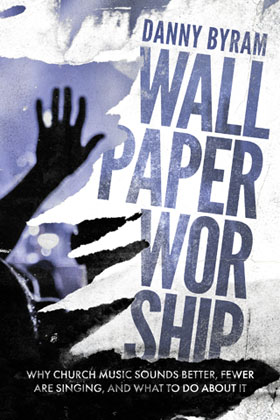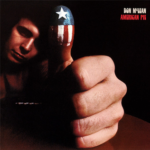
Johann Sebastian Bach (1685-1750) is recognized by musicians as the greatest of church music composers. However, Bach was not interested in congregational singing. Here’s why.
Bach’s goal was to compose the greatest music ever performed in church. He succeeded. Throughout the Baroque period as the pipe organ grew in popularity – and in its ability to mimic orchestral instrument sounds – organists became more skilled in mastering the instrument. Bach’s music was so good and advanced, it challenged the skills of instrumentalists and singers. What resulted was ornamental interludes between hymn stanzas and excessive alteration of hymn tunes. Lead singers (in the Italian operatic style of the day), as well as instrumentalists, would take off on a credenza (a fancy musical term for “licks”) leaving congregational singing in the dust. When the composer, instrumentalists or vocalists hid what was familiar to their congregants inside fancy arrangements or behind their excellent abilities, it gave the signal to congregants: “Just listen to what we know how to do!”
Does this sound familiar? It seems the Baroque phenomenon has recycled. When congregants gather today to sing together but are given a concert performance with 80% new music, and 20% familiar songs hidden inside of elaborate arrangements – which become un-singable except for those performing them – the message is clear: “Just listen to what we know how to do!”
Throughout history, the church had eras of glorious corporate worship followed by stumbles into observation-based passivity. Some of these periods lasted for hundreds of years until an outside movement helped the church find her voice again and she began to worship God in new ways that were alive in spirit and truth. If we fail to consider the historical context in which we inherited the practice of worship, we find ourselves repeating the mistakes of the past, no matter how well we gift wrap those mistakes.
The good news is: if it’s “baroque,” it can be fixed! (Worship Workshops). There is already a groundswell movement among younger believers who recognize the ruse. People are not stupid. When they walk away from church feeling used as an audience for a weekly group of performers, get ready for a movement to start. I hear stories constantly: people leave for coffee during the music; some arrive purposely late; others are skipping the show altogether and meeting in homes. Even Christian leaders and book publishers I talk with are asking: “What has happened?” A better question to ask is: “What is getting ready to happen?”
Wallpaper Worship is self-correcting. An institution never starts a movement to correct itself. Church movements always start under the church’s nose. People eventually leave what they feel is rote, to find that which they feel is real. Some megachurches may still be filling seats and parking lots. But pastors, worship leaders, and lay leaders tend to ignore fixing anything until they see numbers plateau or decline. Meanwhile, many worshipers – who are leaving in search of deeper waters – are asking “how many cupcakes can I eat until my body demands something more substantial?” Trends always cycle. If it’s “baroque,” it will be fixed, one way or another.
“In Wallpaper Worship, Danny Byram defuses all the pointless dichotomies that so many books on worship get lost on. He gets to the core issues as only someone who has been involved for decades in shaping worship services, both great and small, could do. This book is not about changing our methods, but how our hearts can be changed by shifting priorities and focus and by learning to truly care for those who find themselves simply showing up and lining the walls during worship.” – Michael Card, Songwriter, Author, Bible Teacher
Wallpaper Worship: Why Church Music Sounds Better, Fewer Are Singing, And What To Do About It








Thanks , I’ve just been looking for information approximately
this subject for a while and yours is the greatest I have discovered so far.
But, what about the bottom line? Are you certain about the source? http://www.Svdp-Sacramento.org/events-details/14-11-11/Top_Hat_Dinner_2014.aspx?Returnurl=http://www.mbet88vn.com
Thanks , I’ve just been looking for information approximately this
subject for a while and yours is the greatest I have discovered so far.
But, what about the bottom line? Are you certain about the
source? http://www.Svdp-Sacramento.org/events-details/14-11-11/Top_Hat_Dinner_2014.aspx?Returnurl=http://www.mbet88vn.com
Hi. The source? There are many. It’s undergraduate music history level. Check out “A Survey Of Christian Hymnody” by William J Reynolds. The bottom line? Congregation Participation! If it is not happening because our arrangements are in the way – and our congregants are simply being used as an audience as we perform, then we need to adjust what we are doing. In a football analogy: if we aren’t getting the ball over the goal line, then it’s time to change the game plan. Thanks for your comment.
Hey there! This is kind of off topic but I need some guidance from an established blog.
Is it tough to set up your own blog? I’m not very techincal but
I can figure things out pretty fast. I’m thinking about creating my own but I’m not sure where
to start. Do you have any points or suggestions? Cheers
Hi. Re your inquiry: It may be easier than we think… but the time it would take to find out how easy or difficult it may be could be spent writing blog posts! I recommend finding someone who is an expert at setting it up for you. Blessings. DB
My thoughts exactly! Thanks for this, I’m sharing it with some of my peeps who need to read it.